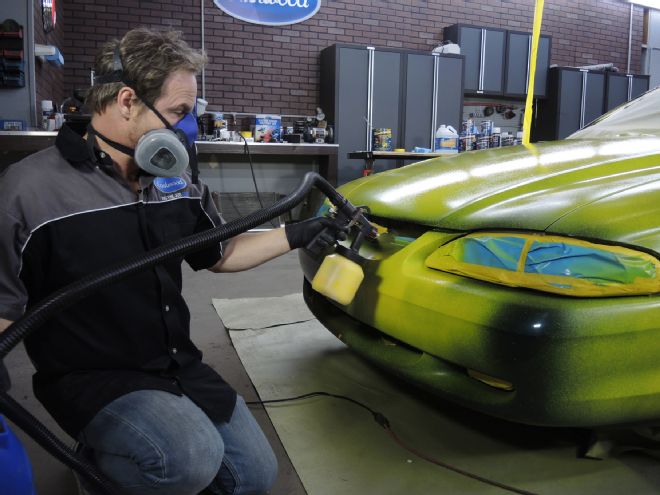
ElastiWrap is a multi-purpose, rubberized, removable coating that can be sprayed, rolled, or brushed onto almost any surface. Coating systems like this have been around for a while, but this one is much improved over other brands and versions of temporary coatings. ElastiWrap is the only one with an intermix system that lets you come up with your own colors, and it is the only one that is 50-state legal—it can be shipped to and legally used in California, based on its pollution standards.
What does this have to do with the 1994 Mustang in these pictures? Well, the paint was last on its owner's to-do list, and having just paid for a tuning session with DBR High Performance in Spring Hill, Tennessee, he's got to save some money for a traditional paintjob. We wanted to show that ElastiWrap can bridge the gap between spending the time, energy, and money on a “real" paintjob and driving around in a vehicle that looks like warm poo. Check out this quick project that cost us a couple hundred bucks, took about six hours of our time, made an amazing difference to the overall appearance of this pony, and buys the owner some time to save some up for the paintjob.
Conclusion
With the investment being a fraction of what a traditional paintjob would be, we've got a great-looking Mustang again and have the option of leaving it just like it is indefinitely, or peeling it off when we're ready to move to the next step of a traditional respray. This coating can be added to or touched up without any additional prep, so if we want to spray more accent stripes, flakes, glitter, or pearls, we can just work on top of what's there. ElastiWrap does what it says it will do: give us an alternative that is less expensive and a lot of fun to spray that doesn't take a ton of expensive equipment to use.
Parts List DescriptionPNSourcePrice Torqued Yellow (quart)15082ZPEastwood$29.99 (qty. 7) Burnout Black (quart)15074ZPEastwood29.99 Matte clear (quart)15250ZPEastwood29.99 Surface Prep15250ZPEastwood9.99 Turbine Paint Gun14878Eastwood69.99 Mineral Spirits (gallon)15287ZPEastwood19.99 Masking tape51515Eastwood5.99 Fine line tape37166Eastwood10.99 Total= $386.86
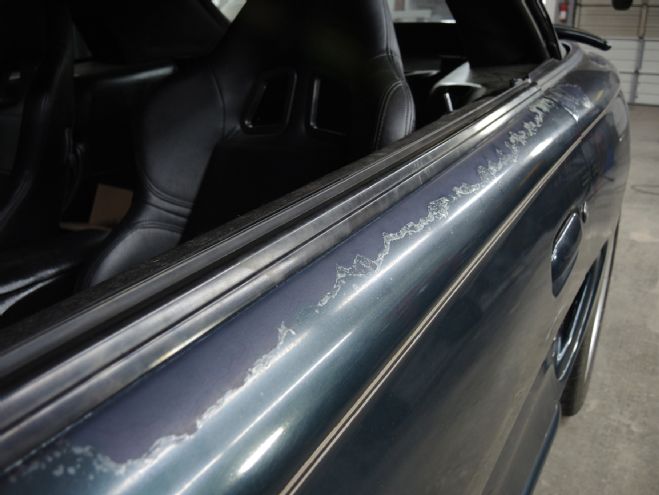
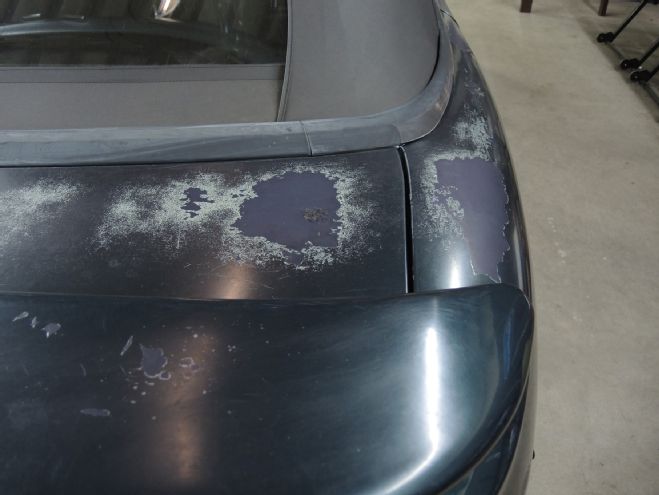
1. The paint on this 1994 Mustang is typical of OE paint from the mid-1990s. It's flaking badly and is too far gone to be saved with polishing. The best way to correct this problem is to disassemble all the trim pieces and strip the paint off and repaint on bare metal. This costs a lot of time and money, whether you're farming it out or you're a DIY hero in your own garage.
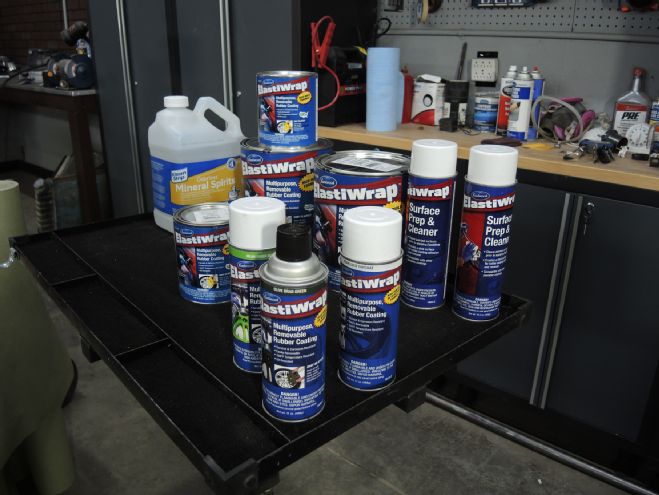
2. ElastiWrap has an intermix system that allows you to make your own colors. It is also available in a variety of colors straight from Eastwood, so you can use pre-mixed colors like we're doing here: Torqued Yellow, Burnout Black, and Clear. We are also using Eastwood's surface prep and cleaner. Mineral spirits will help you with cleanup, as well as safely thin the consistency of ElastiWrap if you're spraying it through a smaller fluid tip in your paint gun.
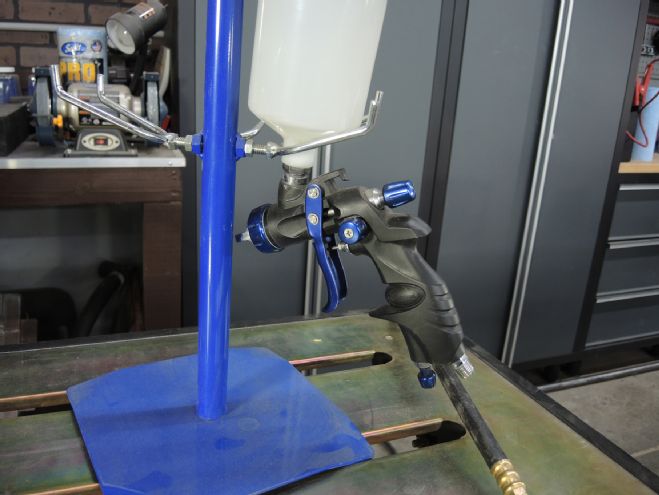
3. If you decide to spray it, Eastwood's Evolution HVLP gun offers a wide variety of fluid tip sizes that are perfect for ElastiWrap. We recommend a 1.8 tip size, but you can spray with as small as a 1.4 (you will most likely need to thin the material, in that case).
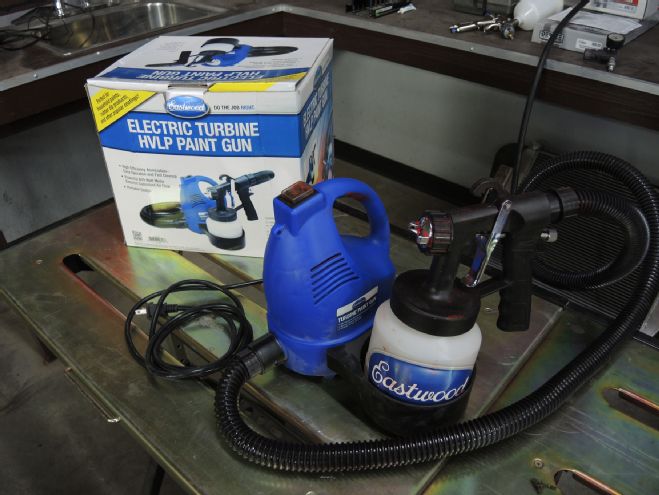
4. Although you can roll or brush ElastiWrap, another option is to use an electric turbine sprayer. This unit can be bought as a “bundle" package from Eastwood for less than $70. Even though it's plastic and has a slightly “less expensive" feel, this one has worked flawlessly for several large jobs, and with minimal maintenance and thorough cleaning, it has always been ready to go.
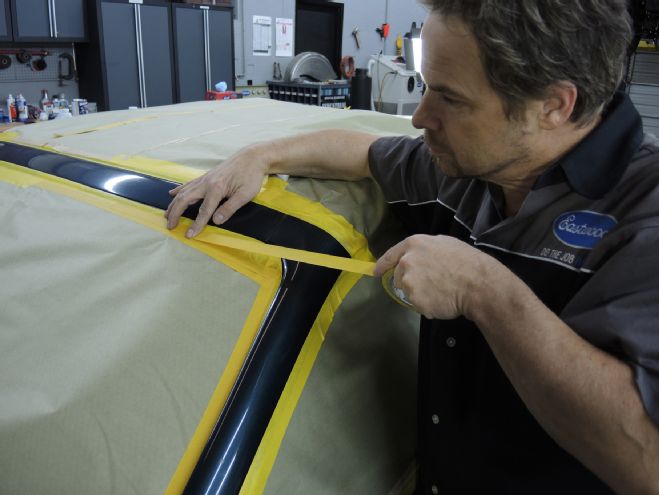
5. Masking is masking, whether for a traditional paintjob or a peel-off coating. The more precise your masking is, the better the end result will be.
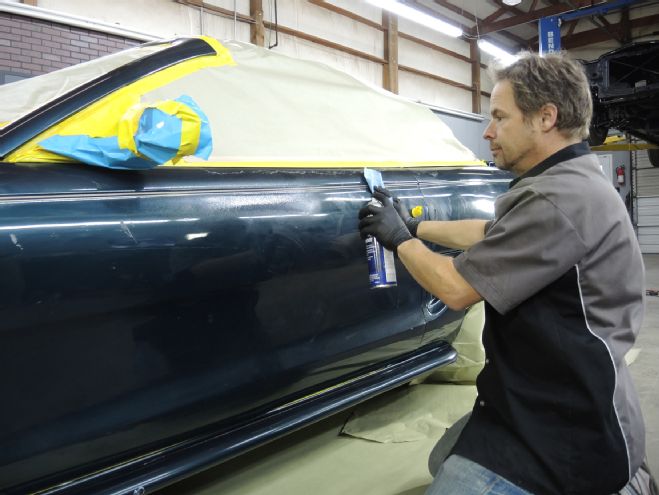
6. Be sure to use Eastwood's surface prep and cleaner. It does two things: it cleans the surface of debris and sets up the surface for easier removal (peeling) of ElastiWrap when you're ready to take it off.
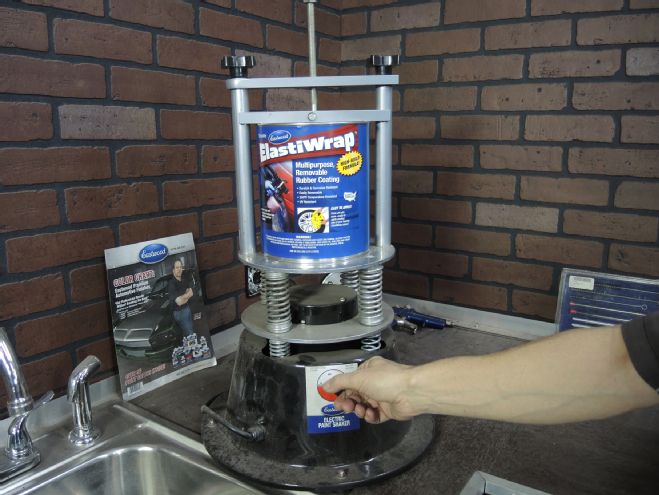
7. Eastwood recommends shaking the cans before opening, but a thorough stirring will blend settled materials if you don't have access to a paint shaker.
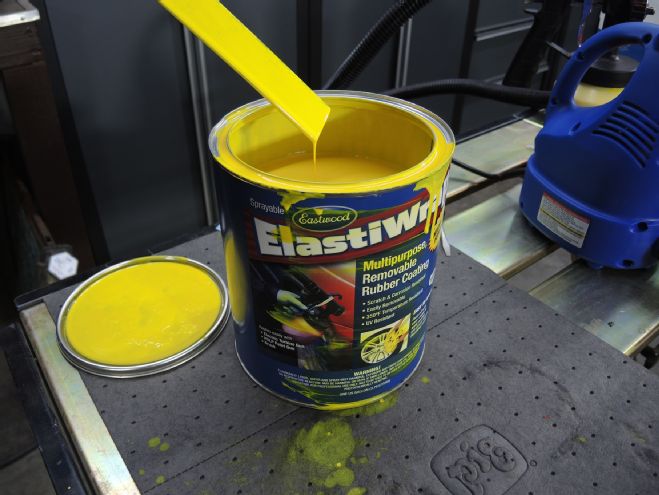
8. The Torqued Yellow is certainly vivid and will give a nice contrast to the black convertible top and silver wheels.
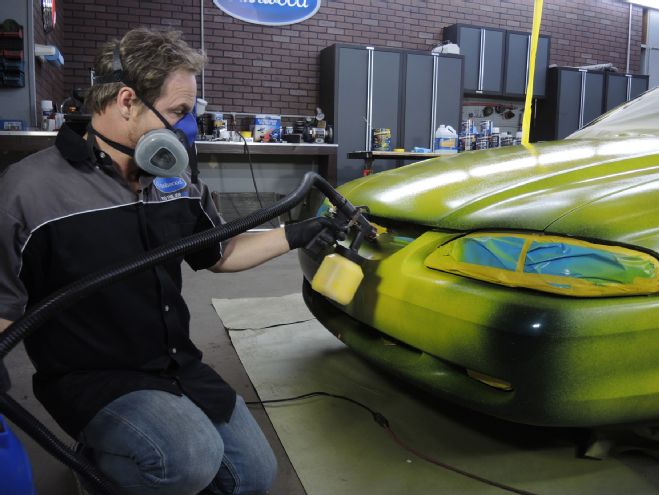
9. Any time you're spraying a light color over a dark base, even with traditional paint, you'll never have complete coverage in one coat. The first coat looks splotchy, but concentrate on your technique, giving 50 percent overlaps on each pass and making it a smooth and even coat.
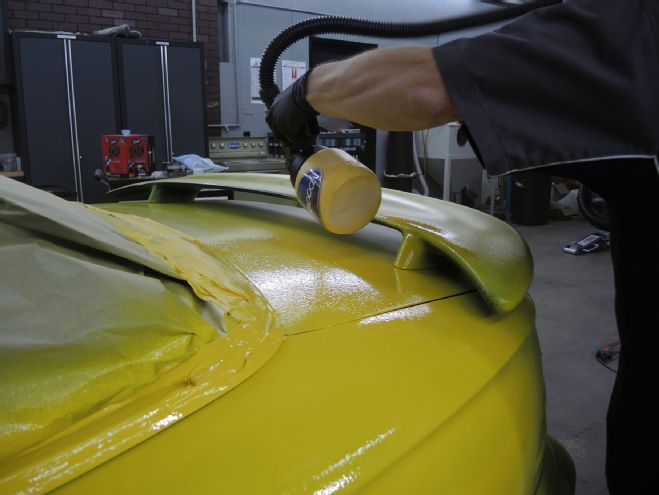
10. The second, third, and fourth coats go on easily, and although it looks a little lumpy coming out of the gun, ElastiWrap self-levels nicely on the panels. Use a minimum of four coats of ElastiWrap. This builds enough depth and film strength that will make the coating easier to peel off when the time comes.
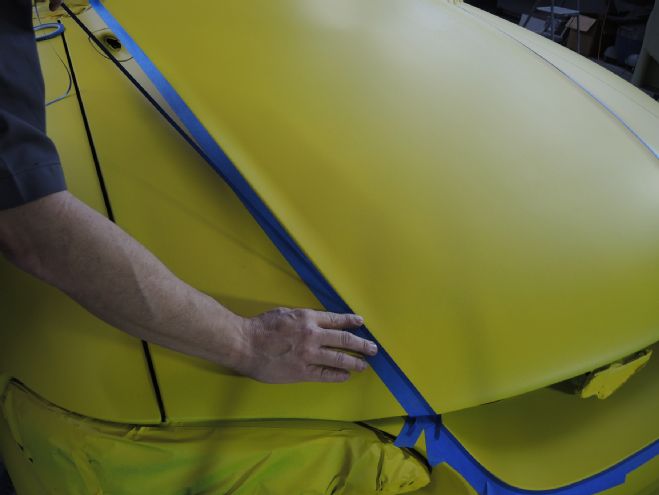
11. We're giving our Pony an accent that takes advantage of the style lines in the hood and fascia. Note that we're using low-tack, blue “painter's tape" to keep from pulling up the ElastiWrap. The vinyl, ¼-inch, fine-line tape has a low enough tack that it can give a crisp line against the two colors and not pull up any undercoats.
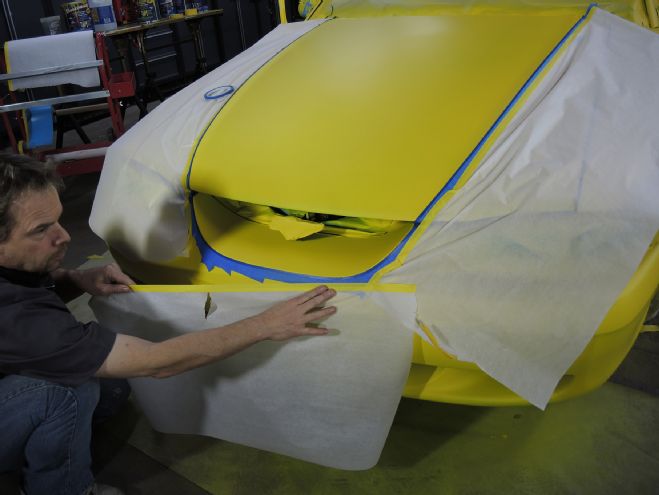
12. With our graphic outlined, we mask the surrounding panels to protect them from overspray, even though the turbine sprayer hardly produces any.
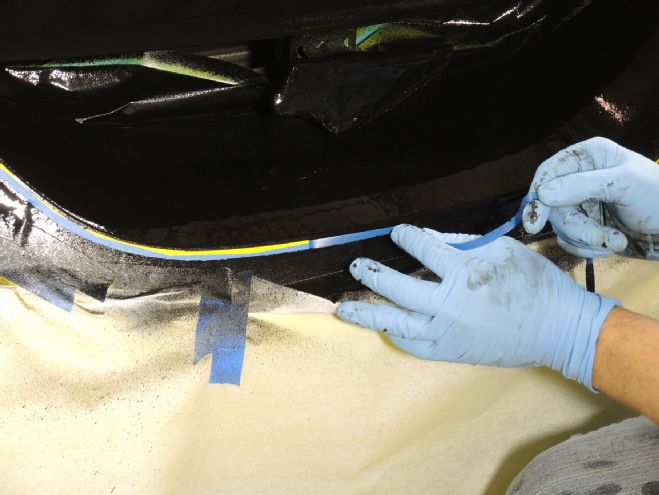
13. Cleaning the gun thoroughly with mineral spirits is very important and will keep the colors pure. Burnout Black is the color of choice for the accent stripe.
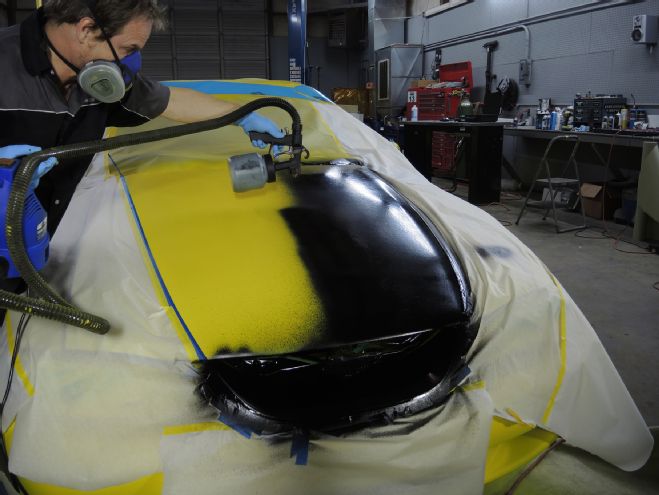
14. Unlike the yellow, black does cover in one coat, so there was no need to go back over it with a second coat.
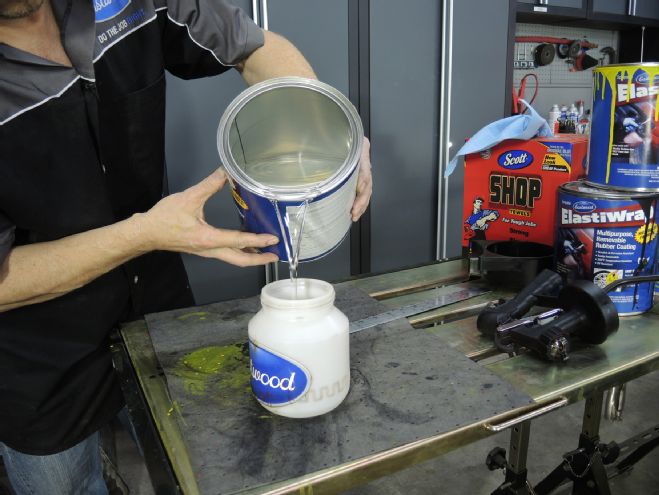
15. We decided to shoot a coat of clear ElastiWrap on top of the black to offset the cool matte finish of the yellow with a shiny black.

16. Remove the fine-line tape while the coating is still wet so it cuts a crisp line into the black without pulling the yellow up.
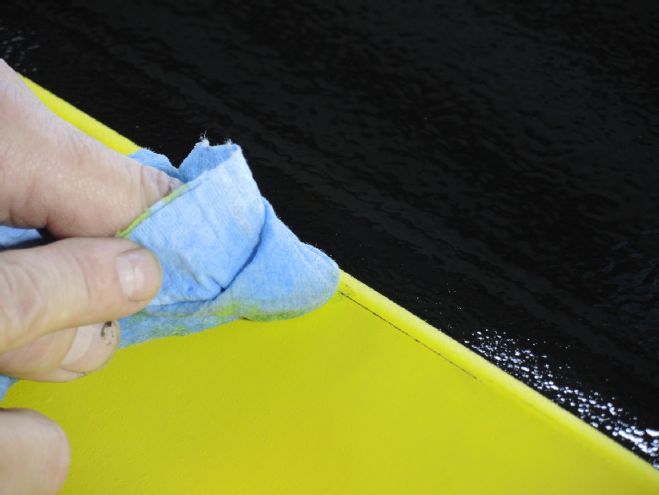
17. If you make a mistake, a little mineral spirits on a rag will quickly remove any overspray or masking boo-boos. Be careful and blot it rather than soak the panel.
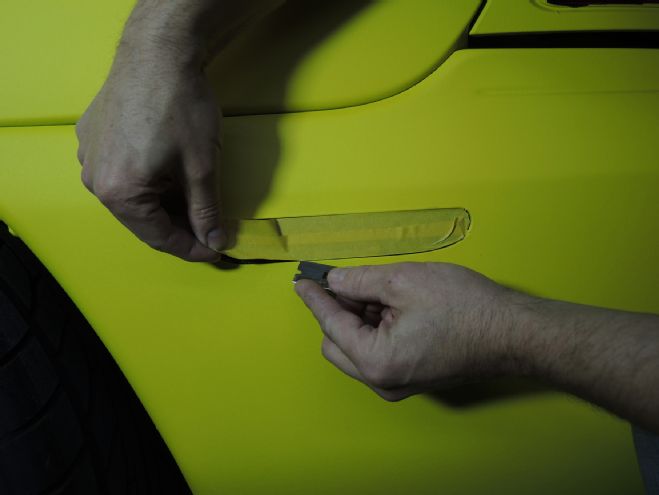
18. Unmasking the rest of the car is relatively straightforward, but you may have to cut the ElastiWrap with a razor blade while unmasking if it bridges a seam.
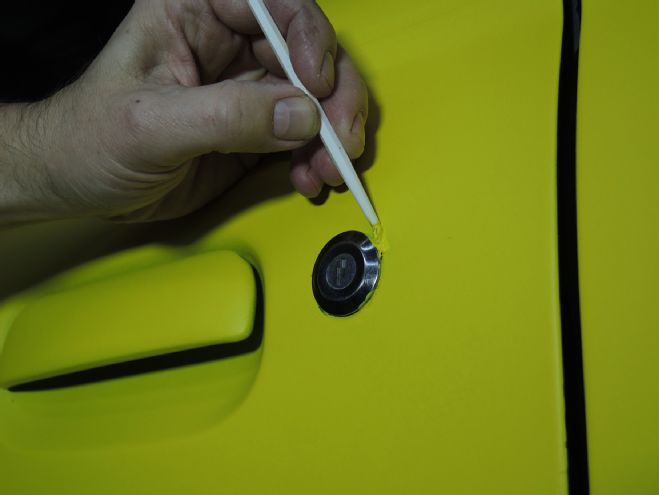
19. Touch-up with a modeling brush works great if some of the coating peeled from the edges while unmasking.
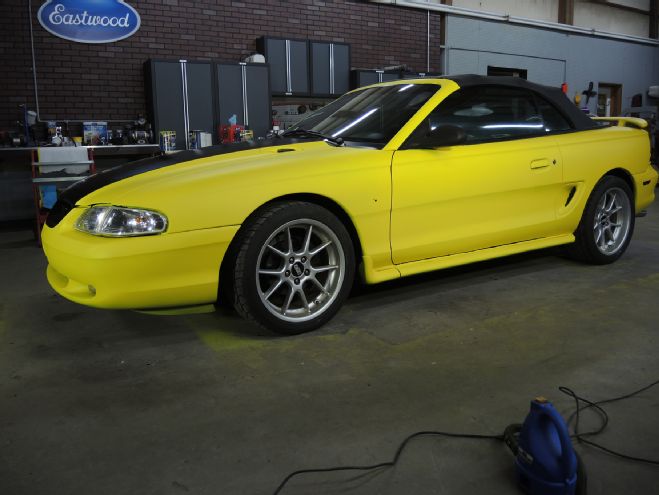
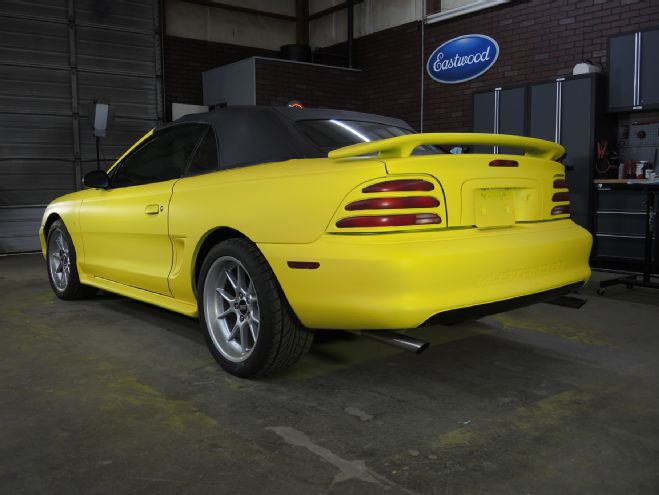
20. No, it's not perfect, but it's cool! The matte finish is actually current, and the way it lifts the appearance of the vehicle is exactly what we had hoped for.
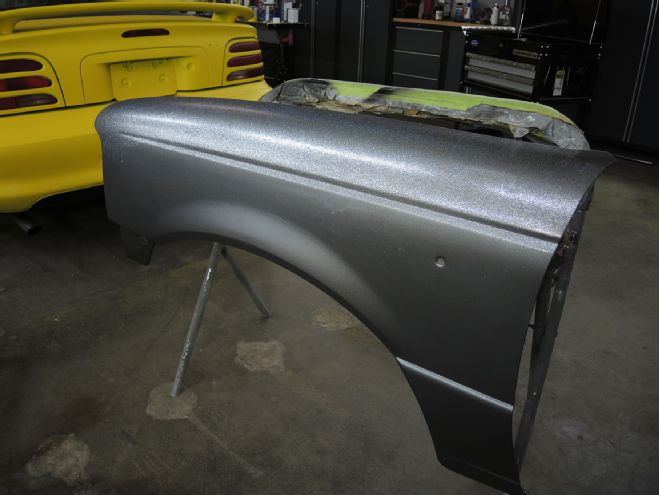
21. Next, we wanted to try something that has been discussed online: spraying automotive clearcoat over ElastiWrap to give it solvent resistance and stain resistance to gasoline and other chemicals. This fender has been sprayed with four coats of clear ElastiWrap with some bass-boat flakes mixed in.
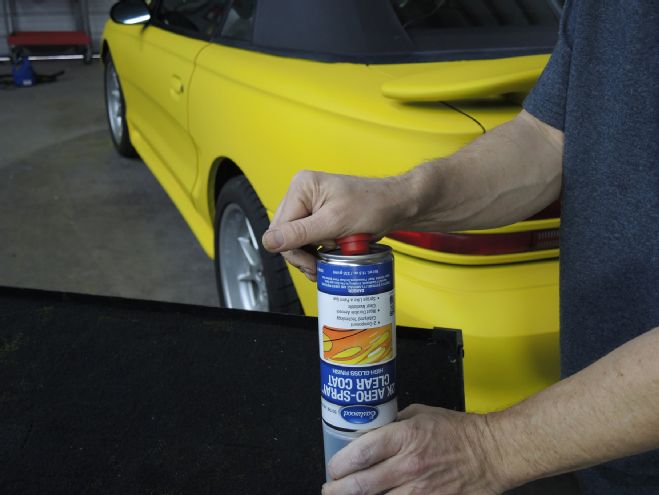
22. Using Eastwood's High Gloss 2K Aerospray catalyzed clear, we wanted to see if we could make this temporary coating into a semi-permanent coating that could still be removed.
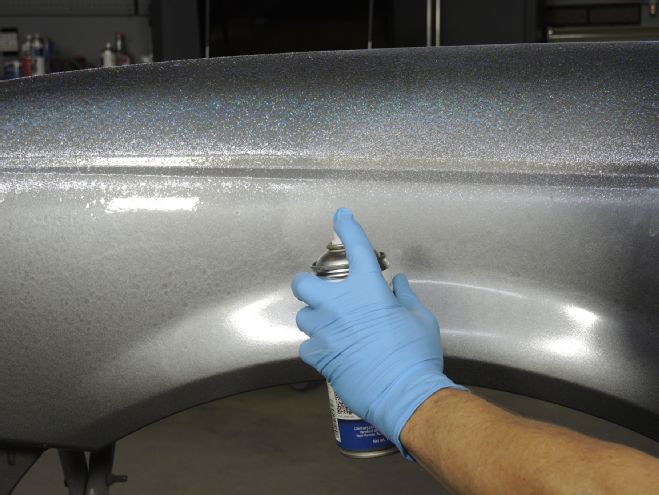
23. We applied two wet coats of the catalyzed clear on and let it sit overnight.
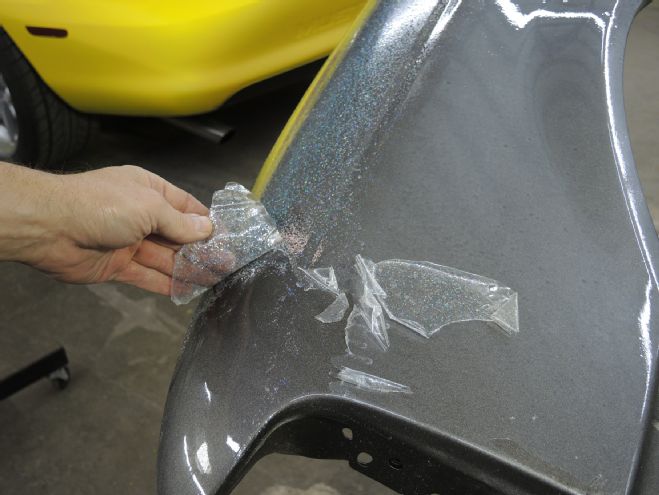
24. Yes, the traditional clear paint peels the ElastiWrap off of the fender, and takes 90 percent of the flakes with it. This opens up many possibilities when it comes to fuel resistance on motorcycle or ATV fuel tanks, or even aesthetic styles that one might want to use with a mix of professional coatings and ElastiWrap—all of which can be removed easily when you're done. That's pretty cool stuff!